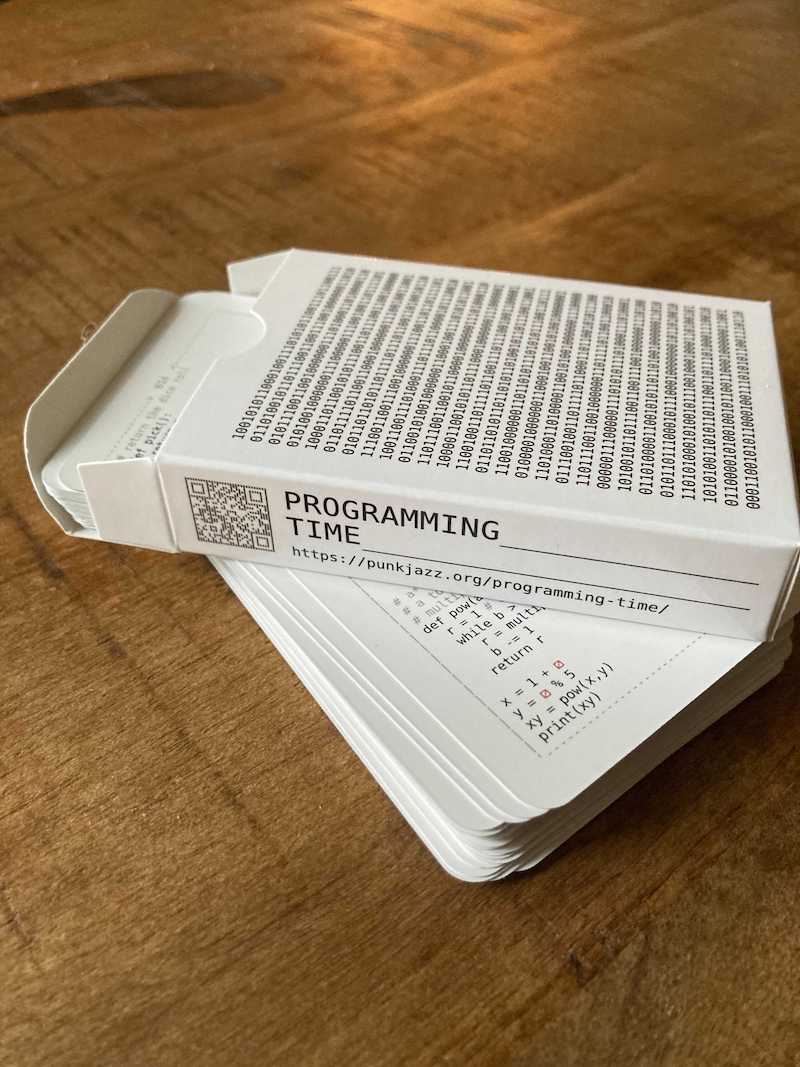 Programming Time, which is a game to teach python and some more fundamental algorithms, from hash tables to RSA
Programming Time, which is a game to teach python and some more fundamental algorithms, from hash tables to RSA
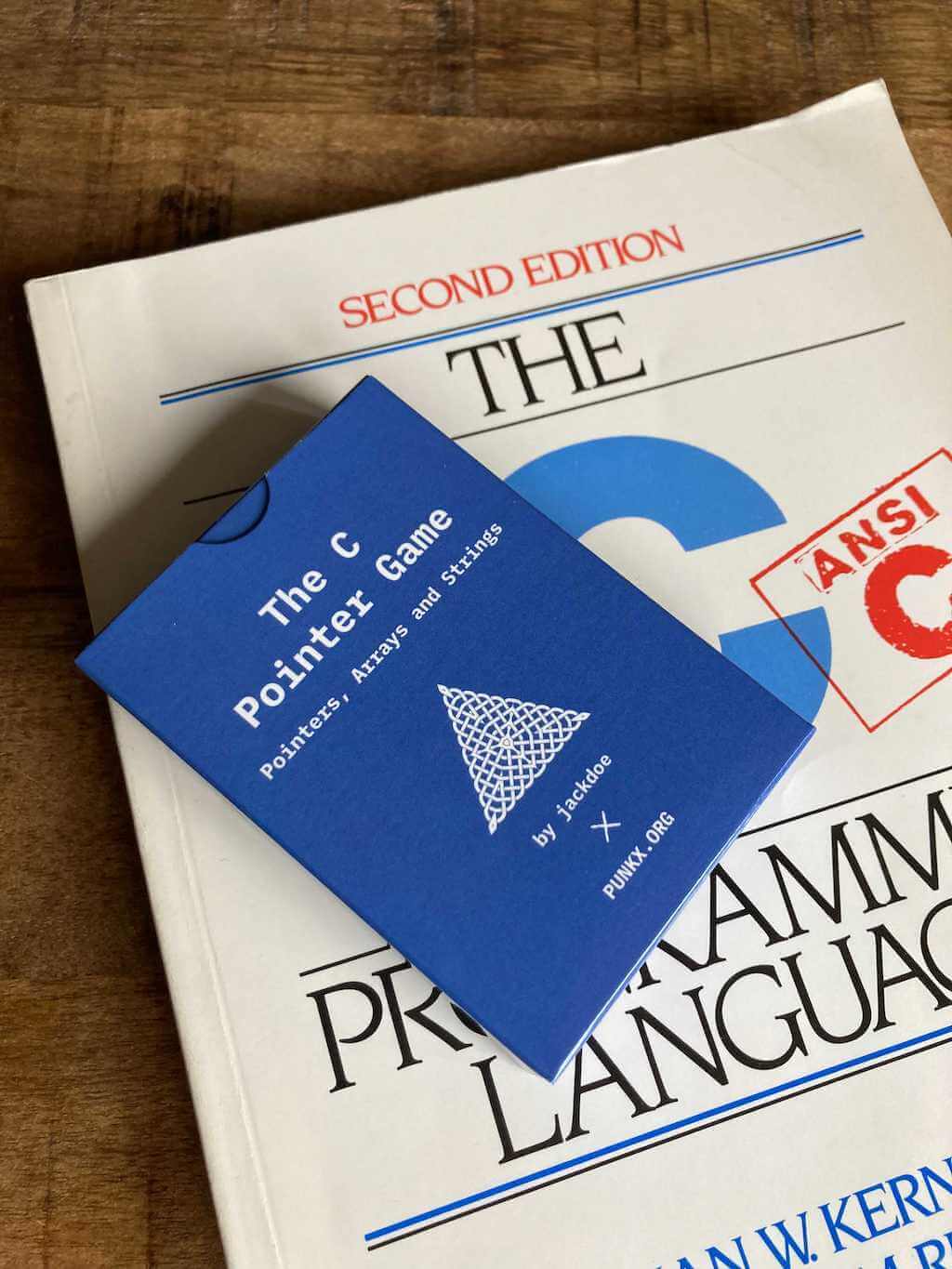
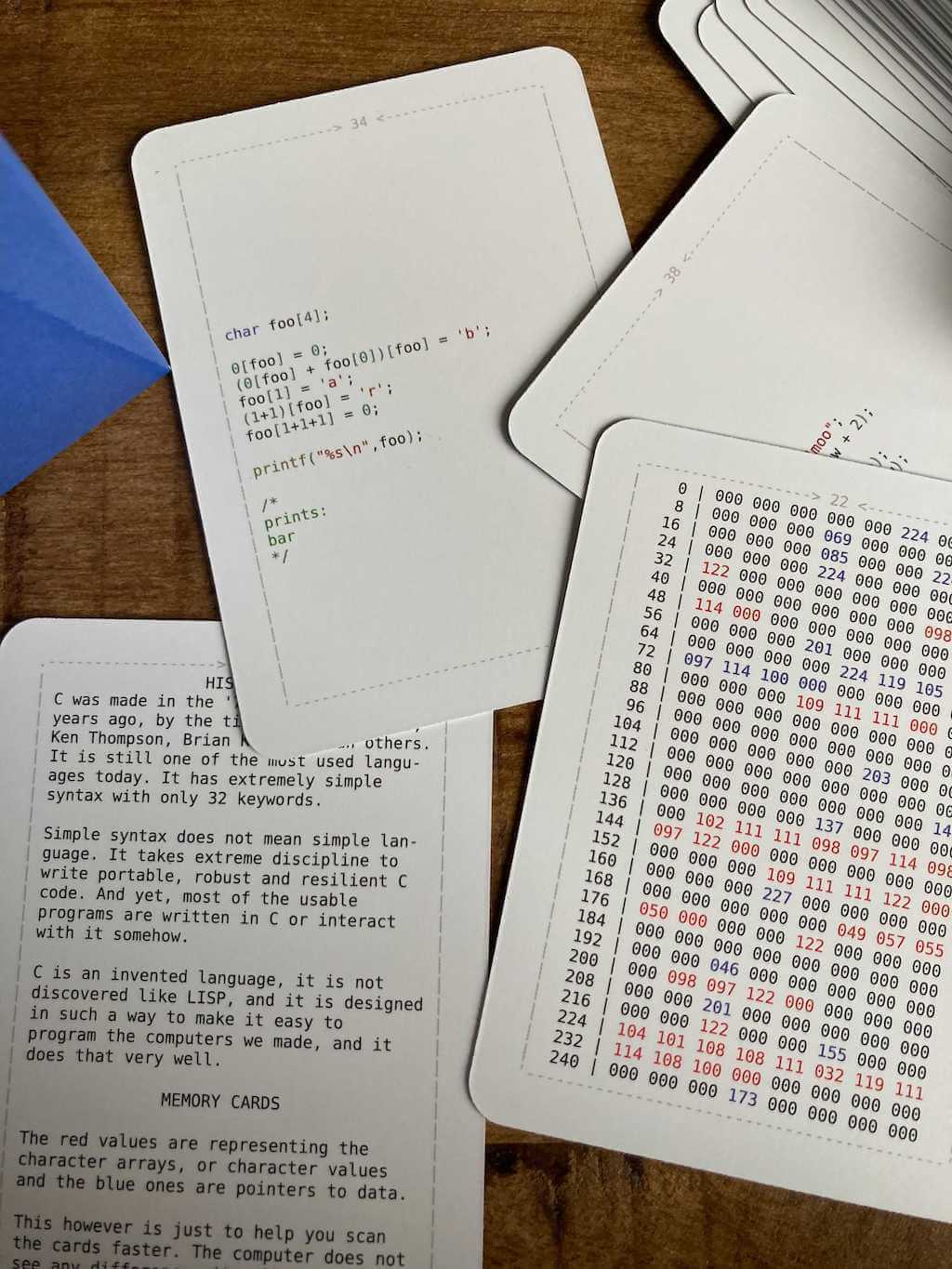
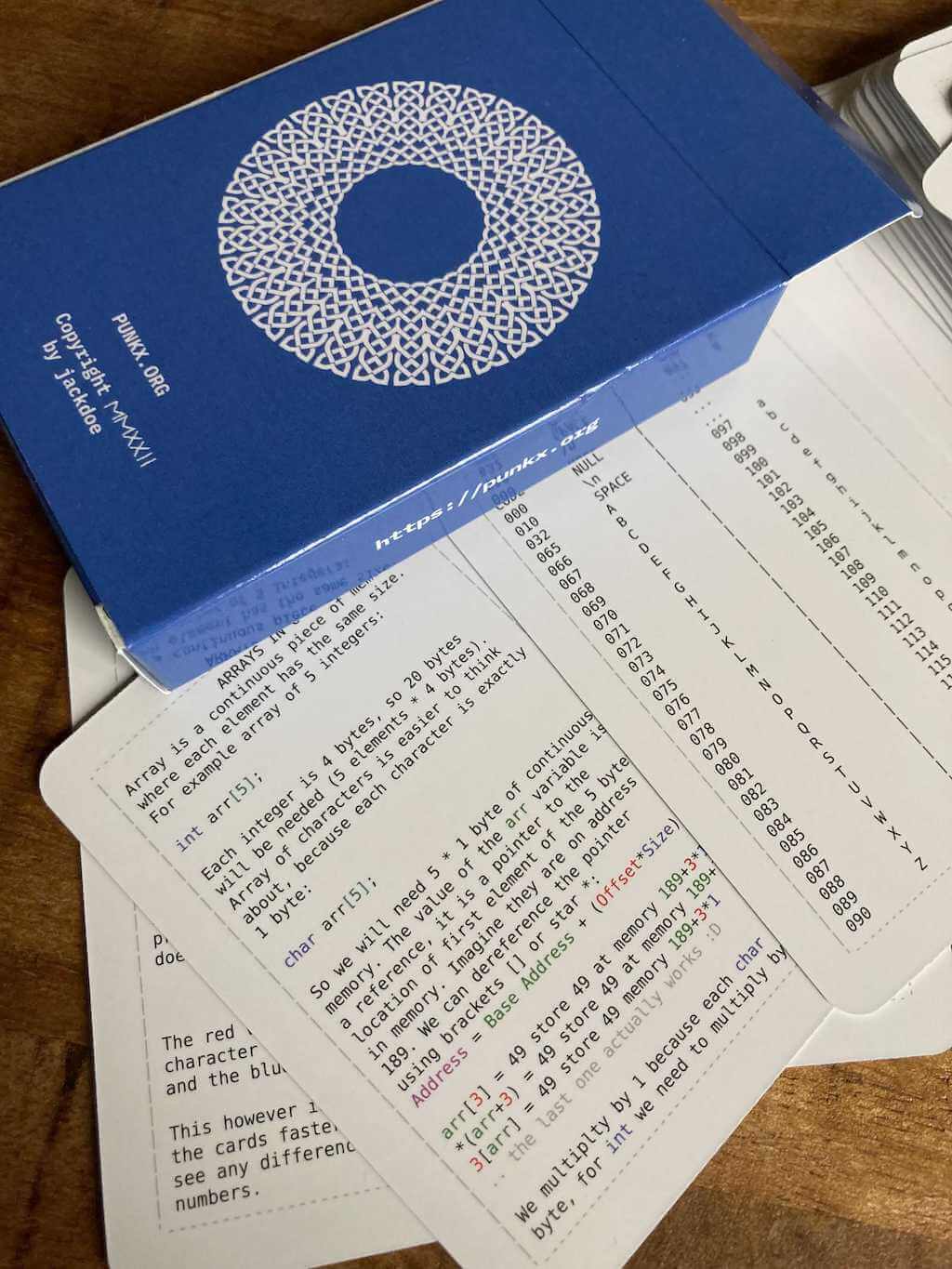
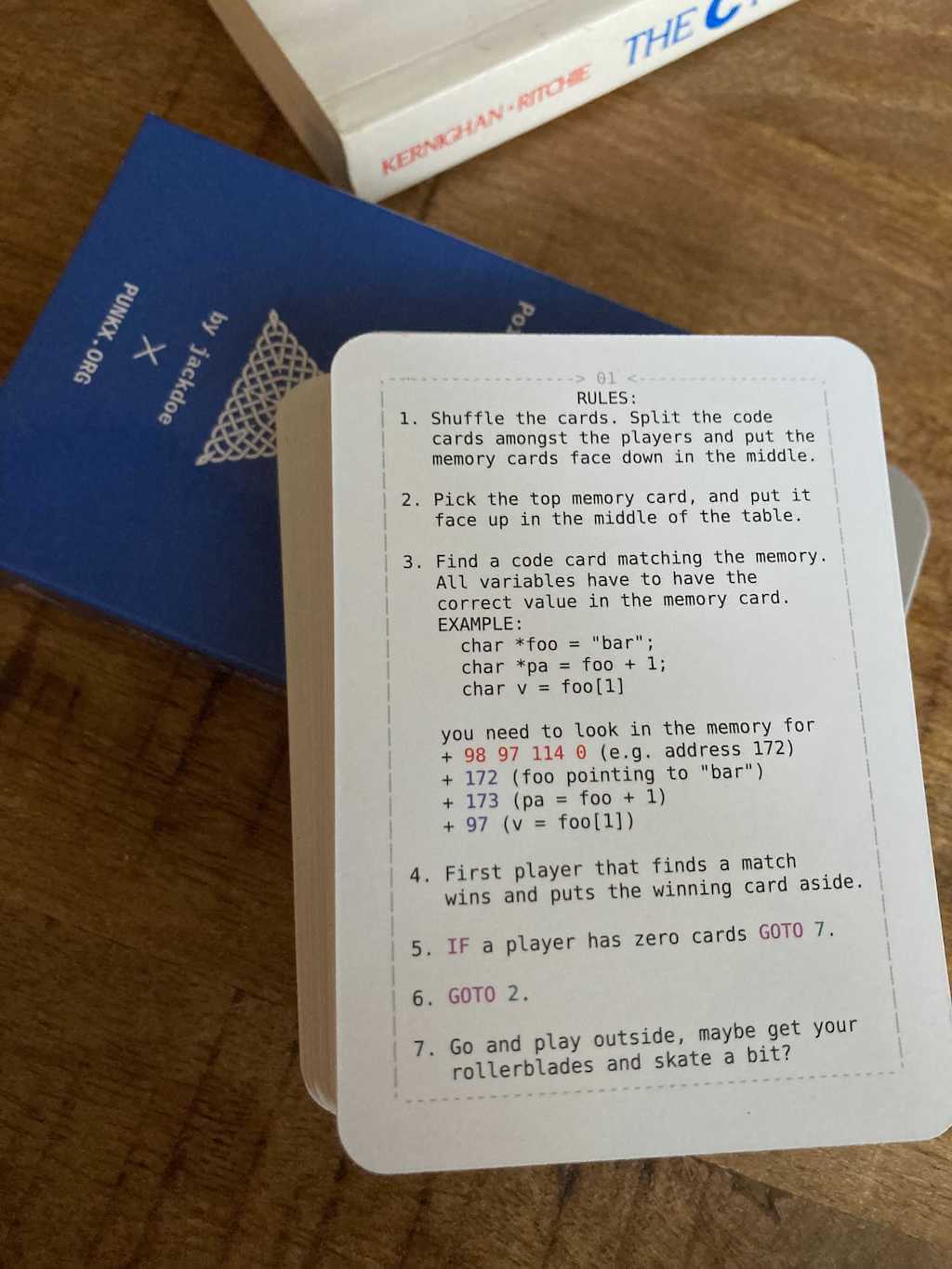
x=5 y=x x=6 print(y) and a=[] b=a a.push(1) print(b)I think deeply understanding pointers will help kids to see through the syntactic sugar and be able to build something cool when they grows up.
RULES:
1. Shuffle the cards. Split the code
cards amongst the players and put the
memory cards face down in the middle.
2. Pick the top memory card, and put it
face up in the middle of the table.
3. Find a code card matching the memory.
All variables have to have the
correct value in the memory card.
EXAMPLE:
char *foo = "bar";
char *pa = foo + 1;
char v = foo[1]
you need to look in the memory for
+ 98 97 114 0 (e.g. address 172)
+ 172 (foo pointing to "bar")
+ 173 (pa = foo + 1)
+ 97 (v = foo[1])
4. First player that finds a match
wins and puts the winning card aside.
5. IF a player has zero cards GOTO 7.
6. GOTO 2.
7. Go and play outside, maybe get your
rollerblades and skate a bit?
This is how example round looks:
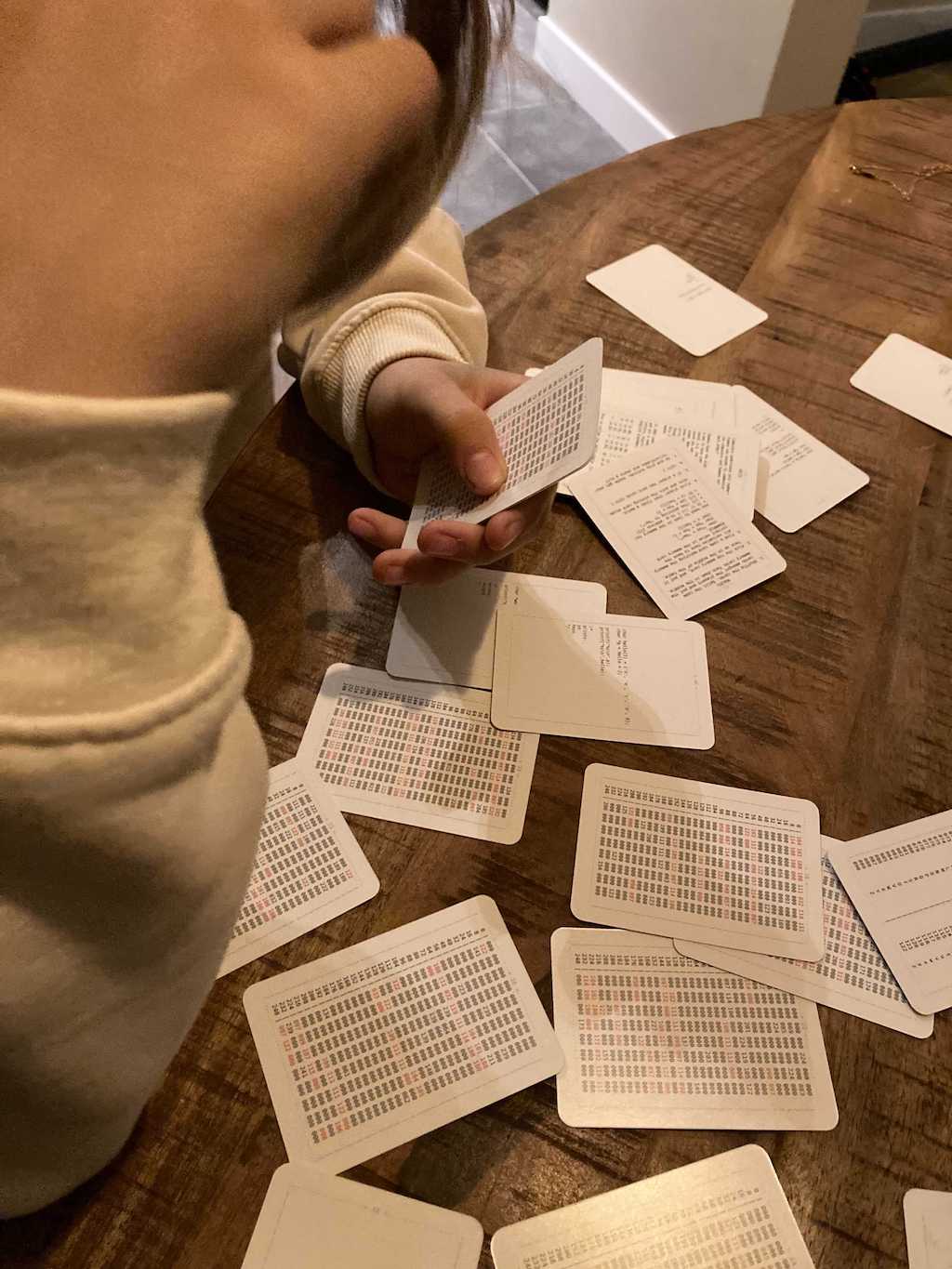
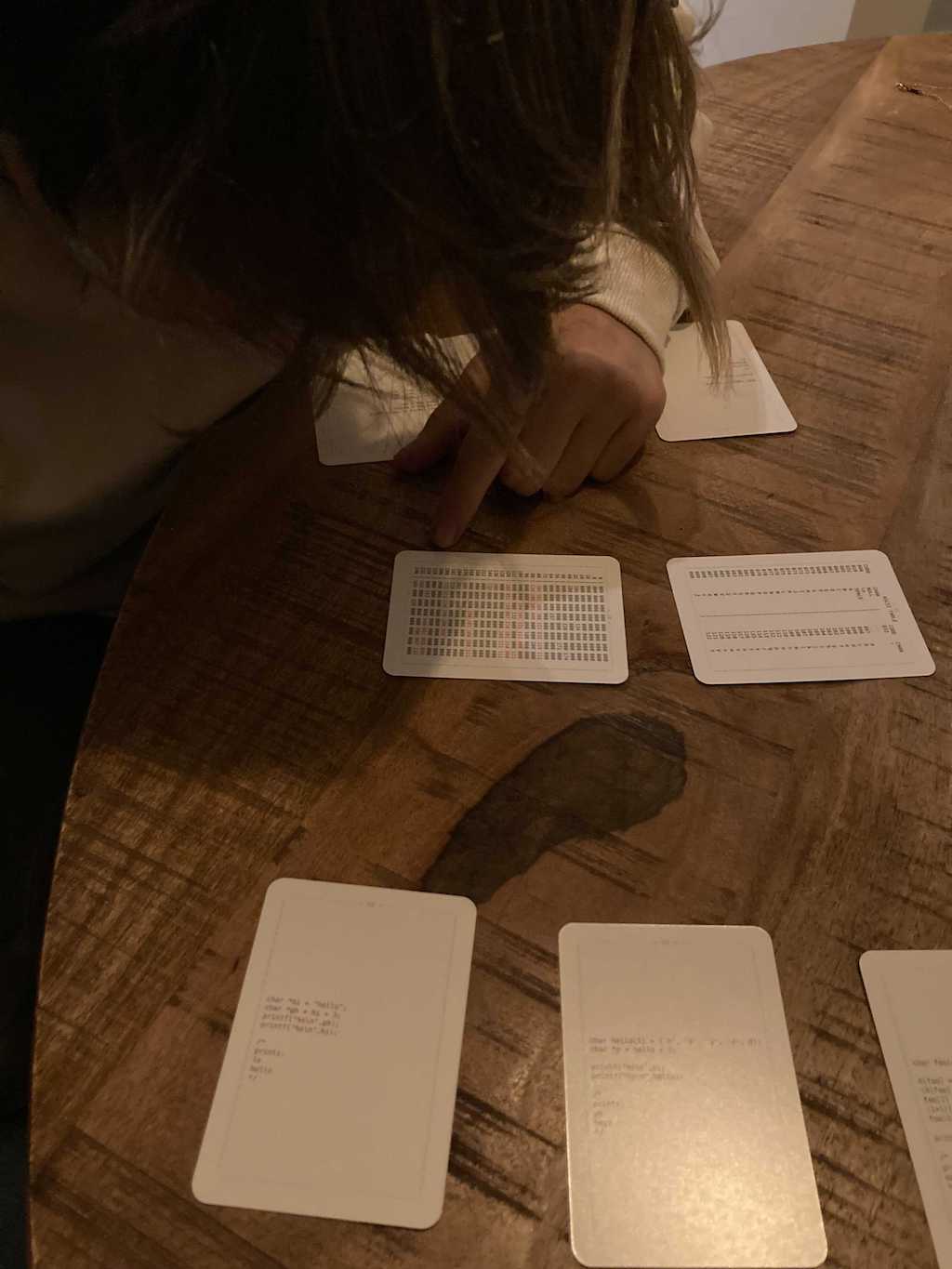
 Programming Time, which is a game to teach python and some more fundamental algorithms, from hash tables to RSA
Programming Time, which is a game to teach python and some more fundamental algorithms, from hash tables to RSA
 The C Pointer Game - Pointers, Arrays and Strings, a game to teach kids to look at the computer memory and understand references and values
The C Pointer Game - Pointers, Arrays and Strings, a game to teach kids to look at the computer memory and understand references and values
 4917, a game to teach kids machine code and how the CPU works with memory and registers
4917, a game to teach kids machine code and how the CPU works with memory and registers
 The Unix Pipes Game, a game to teach kids to use basic UNIX commands:
The Unix Pipes Game, a game to teach kids to use basic UNIX commands: cat, sort, grep, head, tail, wc, uniq
 The Unix Pipes Game - Process Substitution, an expansion of the Unix Pipes Game to teach process substitution and also:
The Unix Pipes Game - Process Substitution, an expansion of the Unix Pipes Game to teach process substitution and also: paste, tr, cut, bc
 RunLength Encoding for Kids, small cards "game" to explain runlength encoding
RunLength Encoding for Kids, small cards "game" to explain runlength encoding
 PUNK0 - The Function Composition Card Game, use cards to manipulate a list and use its values to win the game
PUNK0 - The Function Composition Card Game, use cards to manipulate a list and use its values to win the game
PROJEKT: OVERFLOW, RISCV assembler boardgame
 Programming for kids, a log of my journey of teaching my daughter how to code
Programming for kids, a log of my journey of teaching my daughter how to code